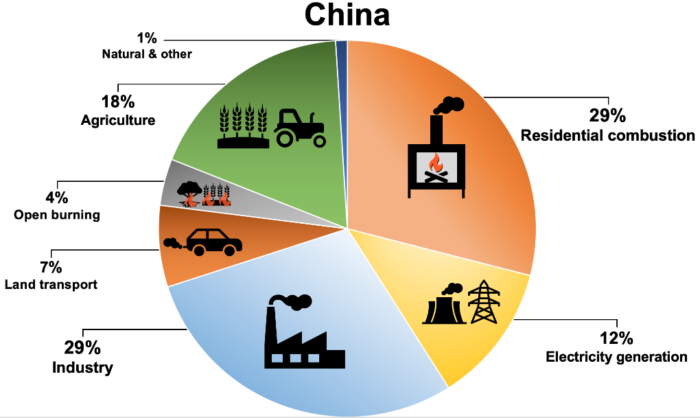Key Findings
PM2.5 concentrations have decreased across China during 2015 to 2019.
During 2015-2019, PM2.5 concentrations decreased across all regions of China with an average reduction of 6% per year. The average PM2.5 concentration in China decreased from 54 µg m-3 in 2015 to 39 µg m-3 in 2019 (Silver et al., 2020). Despite these improvements, air quality in China is still a major health concern.
Ozone concentrations have increased across China during 2015 to 2019.
During 2015-2019, ozone concentrations increased at an average rate of 3% per year (Silver et al., 2020).
The disease burden from PM2.5 exposure in China is much larger than from ozone exposure.
The disease burden in China from ambient PM2.5 exposure is up to 20 times larger than that from ozone exposure (Silver et al., 2020b).
The disease burden from air pollution exposure in China has decreased, but it is still substantial.
The reduction in PM2.5 concentrations across China between 2015 and 2017 has prevented 150,000 premature deaths each year. Exposure to ozone pollution and the associated disease burden has increased over the same period (Silver et al., 2020b).
Despite widespread restrictions, PM2.5 concentrations only declined slightly during the COVID-lockdown.
During the lockdown, NO2 concentrations were reduced by 27%, PM2.5 concentrations declined by 10% and ozone concentrations did not decline at all (Silver et al, 2020). Read a summary of the work here.
Combustion of residential solid fuels for cooking and heating, industry and agriculture are the main sources of particulate pollution in China.
Across China, the main sources of PM2.5 pollution are combustion of residential solid fuels (29%), industry (29%) and agriculture (18%) (Reddington et al., 2019). Industry includes manufacturing, mining, metal, cement, chemical, and solvent industries. Emissions directly associated with food production and consumption (agriculture, residential combustion, agricultural and deforestation fires) together contribute more than half of PM2.5 pollution in China.
Regional collaboration is crucial to improve air quality.
We show that reductions in residential solid fuel use and agricultural fertilizer emissions result in the greatest reductions in PM2.5 exposure and the largest health benefits across the Greater Bay Area. Regional cooperation both inside and outside the Greater Bay Area is a crucial component of efforts to improve air quality (Conibear et al., 2021) that is now recognised in the Clean Air Plan for Hong Kong. Read the Research Spotlight of our work here.


